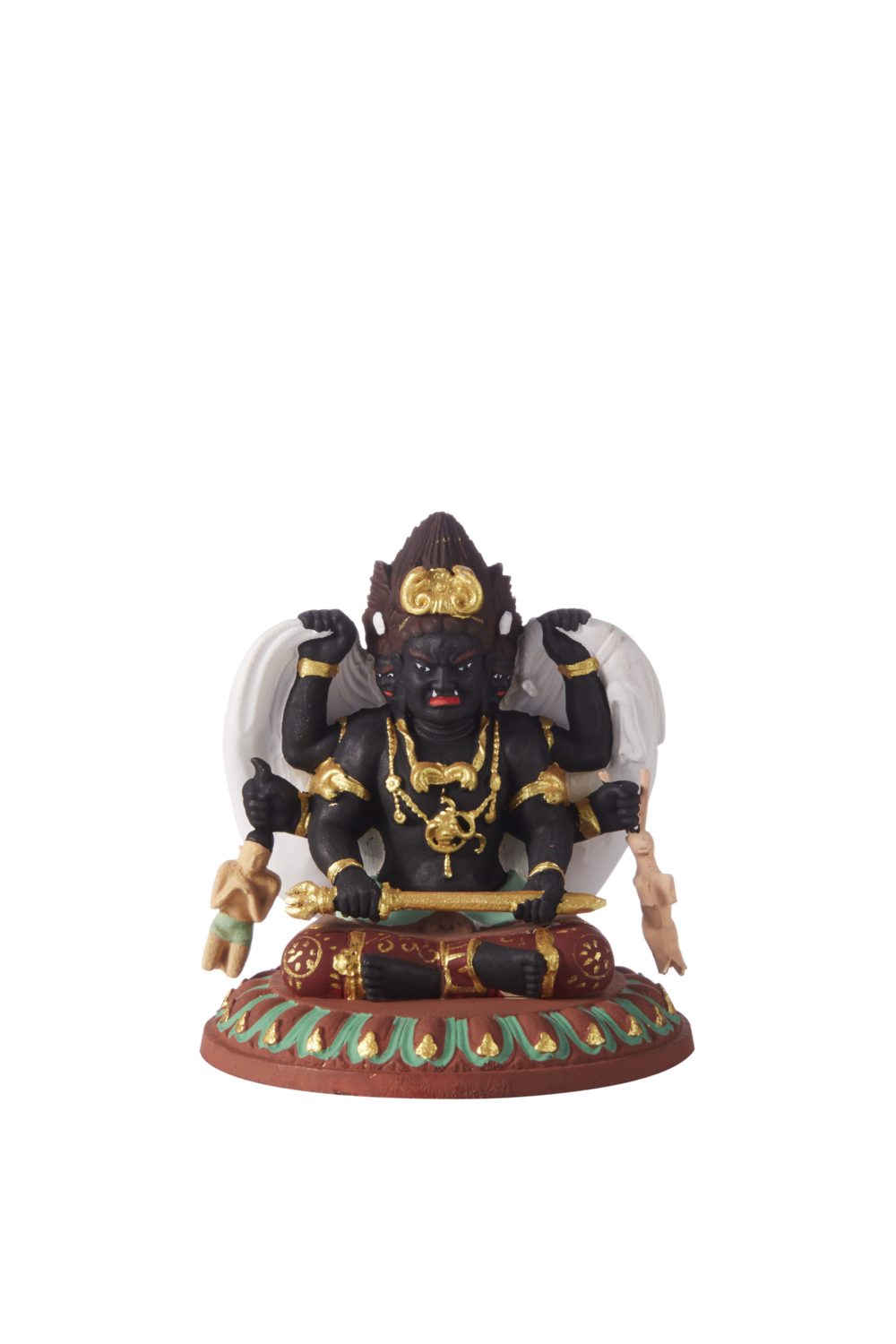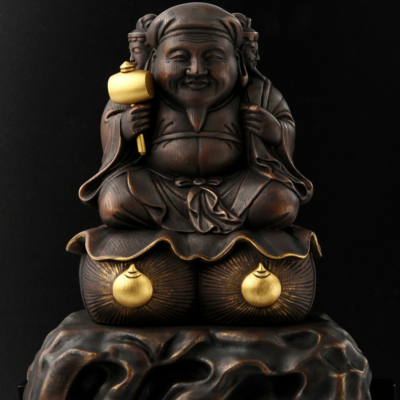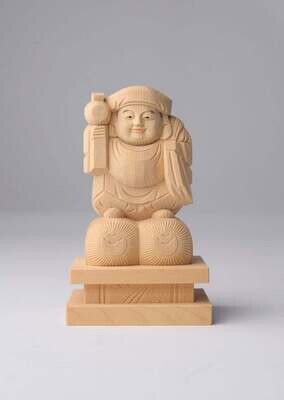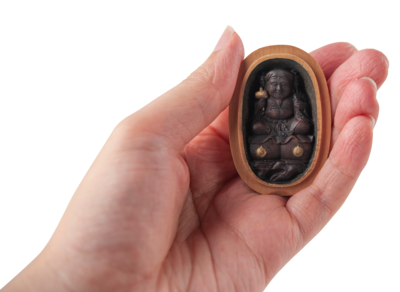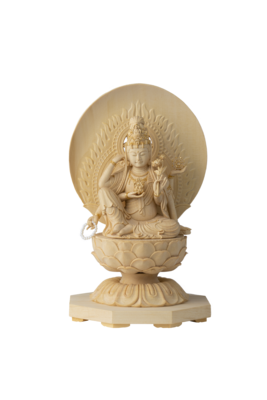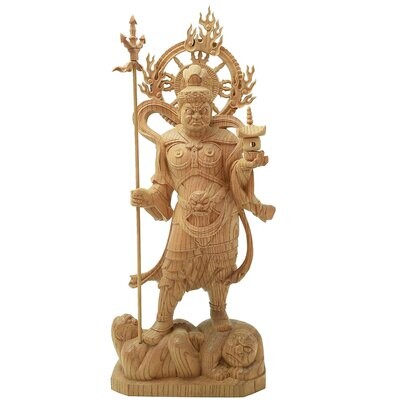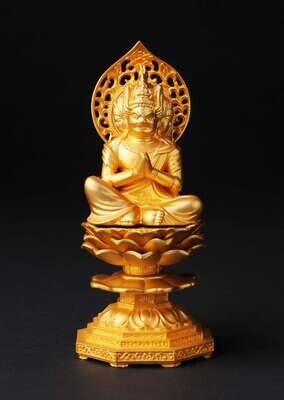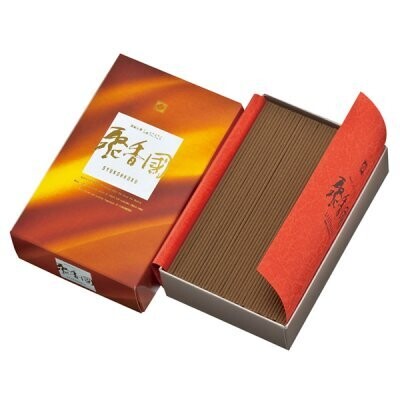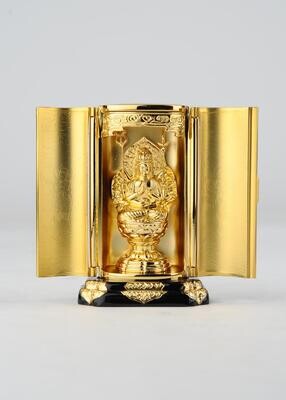Wrathful Sanmen Daikokuten (Three Faced Daikokuten) (彩色忿怒三面大黒天)
In Buddhism, Daikokuten, or Mahākāla, is regarded as the sacred Protector of the Dharma. In Hinduism, Mahākāla is a fierce manifestation of the Hindu god Shiva, which is part of the reason why this Sanmen Daikokkuten is depiected with extreme wrath.
The Three-Faced Colored Fudo Myoo (彩色忿怒三面大黒天, Saishoku Fondu Sanmen Daikokuten) is a special entity in the faith of both Buddhism and Shintoism in Japan. It is known for having three faces, distinguishing it from the usual images of Daikokuten. This presence symbolically represents the wrathful aspect of Daikokuten (or Daikoku Myojin), the guardian deity of Buddhism, and plays a particularly important role in Japanese religious beliefs, especially in esoteric Buddhism (密教).
The Three-Faced Colored Fudo Myoo is typically depicted as an image with three different faces. These faces usually display expressions of anger and intense emotion, creating a very powerful impression. The three faces symbolize the power to attain liberation from the cycle of birth, aging, sickness, and death, as well as overcoming various afflictions. Many of his hands hold weapons and treasures, which are also understood as symbols of protection and blessings for believers.
This deity plays a significant role in esoteric Buddhist practices, and his worship involves special rituals and mantras. Devotees seek liberation from afflictions and protection from negative karma and disasters through his worship. Additionally, he is regarded as a deity of wealth and prosperity, making him an object of worship for those who desire success in business and a prosperous life.
The image of the Three-Faced Colored Fudo Myoo is depicted with vibrant colors, and the three faces are portrayed as very powerful and dignified beings. Colors are often meticulously applied to every detail, bringing the sculpture to life. Gold leaf and gemstones may also be used, further emphasizing his divinity and sanctity.
Believers offer prayers and make offerings in front of this deity, seeking courage, protection, and blessings. In particular, warriors, martial artists, and parents praying for the safety of their families have faith in him as a powerful guardian.
In summary, the Three-Faced Colored Fudo Myoo represents the aspects of wrath and passion through his three faces, providing believers with strength, courage, and the ability to confront difficulties and challenges. He is a powerful guardian for followers in the religious landscape of Japan, beloved for protection against negative karma, disasters, and as a means to seek spiritual liberation.
- Size: H5.5×W5×D5 (cm), 30g
- Material: Tsuge (柘植)
- Made in China
- You can choose the option to consecrate this statue (give an eye-opening ceremony) before it is shipped from Japan. If you choose this option, we will bring the statue to a Japanese temple, and pay them the necessary fees so that your statue is properly consecrated. The temple will issue a certificate of proof with your name on it, which will also be shipped together with your statue
- Shipped globally from Japan by using DHL. DHL is the world-class shipping services provider who makes international delivery a fast, smooth, and hassle-free experience. Delivery time can be faster than when shopping at an e-commerce website in your country, and of course your package will be covered by insurance. You can check the shipping cost for your entire order before you make a purchase
